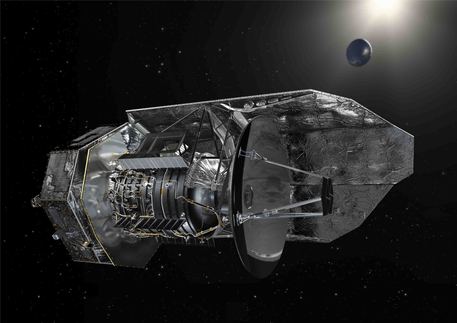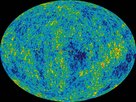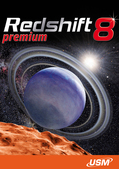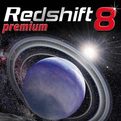When cool is not cool enough
Why do some space telescopes have to be cooled?
 © ESA/AOES Medialab
|
The image shows the Herschel Space Telescope which will study the origins of stars and galaxies. The telescope operates in the infrared range and will observe some of the coolest and most distant objects in the Universe. With its 11.5 feet diameter mirror, the telescope is the largest of its kind. The launch of the satellite is planned for May 14, 2009.
German Aerospace Center
For certain measurements, this is not cold enough.
However, space telescopes that make their observations in the infrared range – that is, thermal radiation – must be cooled. This is because the telescope itself has a certain temperature and continually radiates heat that would interfere with the measurements taken by the heat sensor. In order to minimize this characteristic radiation, the telescope must be cooled as far as possible below the temperatures at which it will make its observations in space.The Herschel space telescope, which is scheduled for launch on May 14, will measure thermal radiation at very low temperatures. This radiation penetrates interstellar dust clouds, allowing us a glimpse of the furthest regions of the cosmos and letting us draw conclusions about the formation of galaxies and stars.
Parts of the Herschel telescope must be cooled to around minus 454 degrees Fahrenheit to prevent measurements made by its sensors from being distorted by their characteristic radiation. A large, insulated shield protects the telescope from the radiation emitted by the Sun and the Earth, which would otherwise cause it to heat up. The telescope is actively cooled by the slow evaporation of over 600 gallons of liquid helium, in a similar way to the evaporative cooling mechanism employed in a refrigerator. Excess heat is then rejected into space by radiators. In this way, the sensors can be cooled to almost minus 456 degrees Fahrenheit and the telescope reaches its highest level of measuring sensitivity.
When cool is not cool enough
Why do some space telescopes have to be cooled?
 © ESA/AOES Medialab
|
The image shows the Herschel Space Telescope which will study the origins of stars and galaxies. The telescope operates in the infrared range and will observe some of the coolest and most distant objects in the Universe. With its 11.5 feet diameter mirror, the telescope is the largest of its kind. The launch of the satellite is planned for May 14, 2009.
German Aerospace Center
For certain measurements, this is not cold enough.
However, space telescopes that make their observations in the infrared range – that is, thermal radiation – must be cooled. This is because the telescope itself has a certain temperature and continually radiates heat that would interfere with the measurements taken by the heat sensor. In order to minimize this characteristic radiation, the telescope must be cooled as far as possible below the temperatures at which it will make its observations in space.The Herschel space telescope, which is scheduled for launch on May 14, will measure thermal radiation at very low temperatures. This radiation penetrates interstellar dust clouds, allowing us a glimpse of the furthest regions of the cosmos and letting us draw conclusions about the formation of galaxies and stars.
Parts of the Herschel telescope must be cooled to around minus 454 degrees Fahrenheit to prevent measurements made by its sensors from being distorted by their characteristic radiation. A large, insulated shield protects the telescope from the radiation emitted by the Sun and the Earth, which would otherwise cause it to heat up. The telescope is actively cooled by the slow evaporation of over 600 gallons of liquid helium, in a similar way to the evaporative cooling mechanism employed in a refrigerator. Excess heat is then rejected into space by radiators. In this way, the sensors can be cooled to almost minus 456 degrees Fahrenheit and the telescope reaches its highest level of measuring sensitivity.










